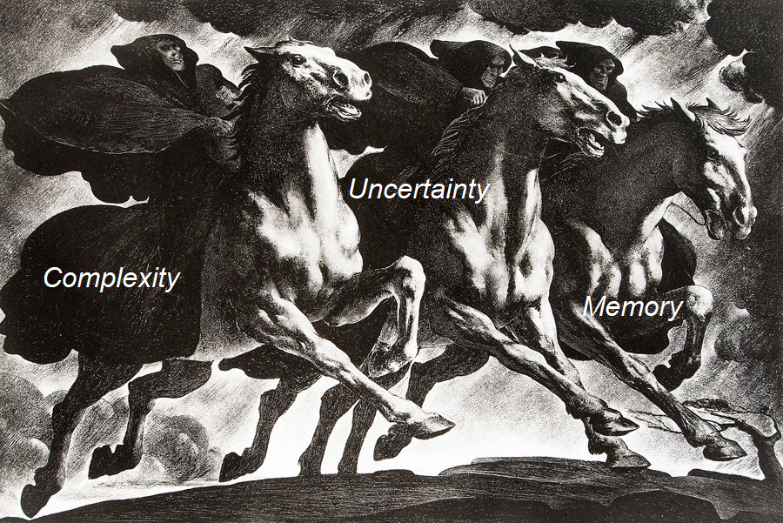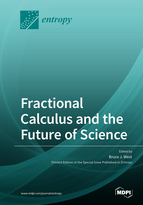Fractional Calculus and the Future of Science
A special issue of Entropy (ISSN 1099-4300). This special issue belongs to the section "Complexity".
Deadline for manuscript submissions: closed (31 December 2020) | Viewed by 41249
Special Issue Editor
Special Issue Information
Dear Colleagues,
Three centuries ago, Newton transformed Natural Philosophy into today’s Science by focusing on change and quantification, and he did so in a way that resonated with the scientific community of his day. His arguments appeared to be geometric in character, and nowhere in the Principia do you find explicit reference to fluxions or to differentials. What Newton did was reveal the entailments of the calculus and convince generations of scientists of the value of their focusing on how physical objects change in space and time. Some contemporary mathematicians of his generation recognized what he had done, but their number could be counted on one hand, and their comments are primarily of historical interest only.
Fast-forward to today and Modern Science, from Anatomy to Zoology, is seen to have absorbed the transformational effect of Newton’s contribution to how we quantitatively and qualitatively understand the world, the fundamental importance of motion. However, it has occurred to a number of the more philosophically attuned contemporary scientists that we are now at another point of transition, where the implications of complexity, memory, and uncertainty have revealed themselves to be barriers to our future understanding of our technological society. Fractional calculus (FC) has emerged from the shadows as a way of taming the three horsemen in the figure with a methodology capable of analytically outdistancing these imposters.

We are looking for imaginative articles that implement FC and reveal its transformational nature, including but not limited to such things as: how a fractional derivative in time incorporates memory into the solution of the dynamic description of an earthquake, a brain quake or a crash in the stock market; how the fractional derivative in space incorporates spatial nonlocality into the solution of the complex dynamical descriptions of a riot, the collective intelligence of social groups, or the neuronal activity of the brain; or how the combined fractional derivatives in both time and space of measures of uncertainty incorporate both memory and nonlocality into the phase space solution to capture the limited uncertainty of an ensemble of fractal trajectories, or the scaling behavior of complex dynamical networks.
In short, we are seeking submissions in which the authors look behind the mathematics and examine what must be true about the phenomenon in order to justify the replacement of an ordinary derivative with a fractional derivative before they solve the new equations. For example, an insightful and extended explanatory description as to why one ought to expect the flow equations for honey and water to be different followed with a comparison of the solutions to the ordinary and fractional equations with data would constitute a paradigm for a submission. The desired articles are intended to provide the reader with a window into the future of a specific piece of science through the lens of FC and how that lens will make you think differently about that area of science. Thus, a perfect submission will be more about the intellectual implications and utility of the FC than it is about its formal structure in chemistry, epidemiology, sociology, psychology, physics, or any other scientific discipline.
Prof. Dr. Bruce J. West
Guest Editor
Manuscript Submission Information
Manuscripts should be submitted online at www.mdpi.com by registering and logging in to this website. Once you are registered, click here to go to the submission form. Manuscripts can be submitted until the deadline. All submissions that pass pre-check are peer-reviewed. Accepted papers will be published continuously in the journal (as soon as accepted) and will be listed together on the special issue website. Research articles, review articles as well as short communications are invited. For planned papers, a title and short abstract (about 100 words) can be sent to the Editorial Office for announcement on this website.
Submitted manuscripts should not have been published previously, nor be under consideration for publication elsewhere (except conference proceedings papers). All manuscripts are thoroughly refereed through a single-blind peer-review process. A guide for authors and other relevant information for submission of manuscripts is available on the Instructions for Authors page. Entropy is an international peer-reviewed open access monthly journal published by MDPI.
Please visit the Instructions for Authors page before submitting a manuscript. The Article Processing Charge (APC) for publication in this open access journal is 2600 CHF (Swiss Francs). Submitted papers should be well formatted and use good English. Authors may use MDPI's English editing service prior to publication or during author revisions.







